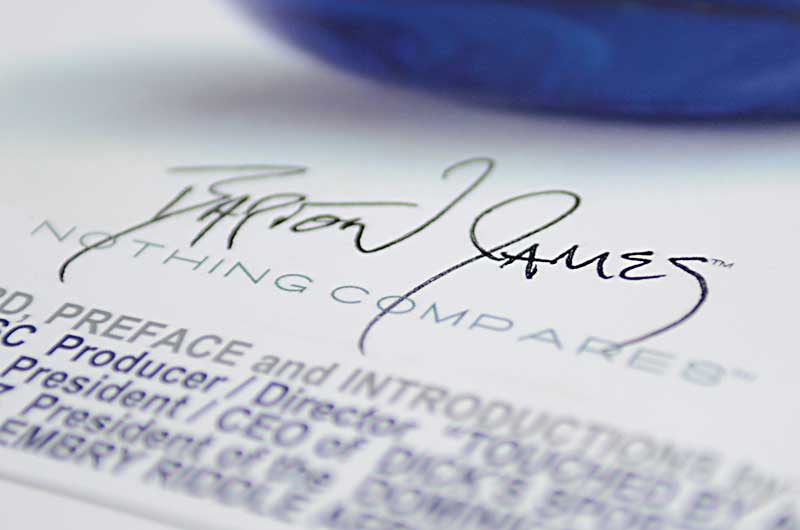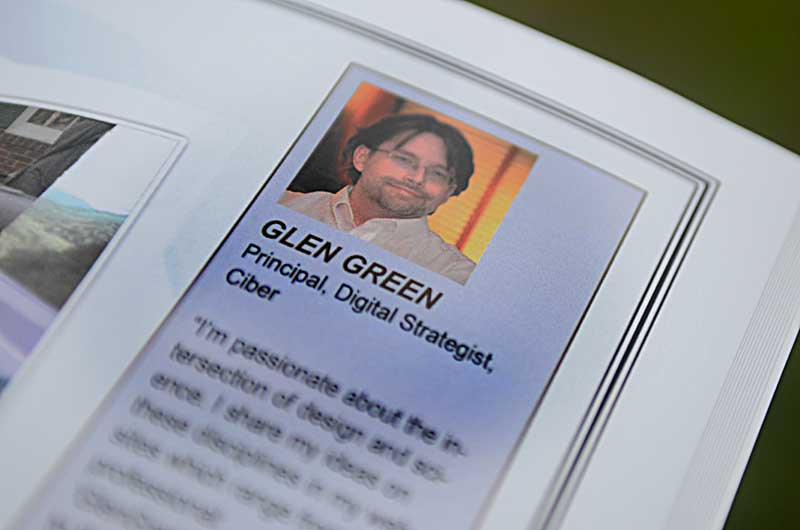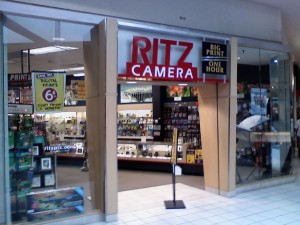Introductions to Author Bart Christner
I’m pleased to share an interview with Barton Christner, author of DIGITAL MEDIA: A VISUAL ENCYCLOPEDIA: D5LIVER.
Bart is equal parts science geek and artist, and he brings these two sensibilities together in his work, insights and now his book, the first in a series.
Q: Bart, tell us a little bit about yourself and your background.
First, thanks for an opportunity to interview it’s appreciated and of considerable value to be featured on Glen Green Pro.
Early in my teens I talked about writing a book. I felt life’s philosophy should compel each of us to leave “something of value behind”. I joked my tombstone should read “He Made a Difference”. (laughs) Pubescence didn’t lend much experience or material from which to draw; despite artistic inclinations, having won cover design contests, a magnum opus would have to wait.”
Soccer, the thrill of whitewater kayaking, spelunking weekends while exploring computer gaming and graphics, opened up some “book possibilities”. I studied architectural design-built processes, managed recreational clubs, and passionately immersed myself in everything and anything combining visual and technical.
Q: So, you have a new book out. Can you tell us about it and what makes it special?
Throughout the past two decades I gathered, compiled, then wrote DIGITAL MEDIA: A VISUAL ENCYCLOPEDIA. In my twenties, I sensed the strength of any Digital Media book I might create, would demand a wide and recognizable survey of projects and brands. This book is unique in it’s visual layout, highlighting at-a-glance a quantity and quality of first-hand digital media projects, recognized fortune companies, applauded real-world projects, and many of the industry experts responsible for each project’s success.
I considered the book’s several target audiences to be important. The first, emerging digital media professionals seeking career opportunities and an overview of an industry and it’s experts. Second, students seeking supplementary project examples relevant to their study within academic programs like graphic design, software development, broadcast or film, video, photography, advertising, marketing, and communications. Third, the book lends as a general reference and/or historical treatise highlighting a millennium snapshot, two decades significant in presenting early generation examples, a media industry transformed from analog to it’s first-ever digital solutions.
The DIGITAL MEDIA: A VISUAL ENCYCLOPEDIA summarizes a wealth of experience in supporting roles, positions and programs initiated and delivered at the Presidential level, throughout the U.S. (California, Texas, Colorado, Vermont) and internationally on three continents (Canada, Germany, Ireland and the Dominican Republic).
Q: What made you write the book?
My grandmother (we called her “Nana”) surprised me in my late twenties by handing me a ten-inch stack-pile of artwork, publications, videos – everything I’d ever created – she had cherished them and had saved each and every one! I bought my first file cabinet and organized them all.
I branded myself “Barton James” and set about to become expert in all forms of convergent, desktop based Digital Media. I struggled at first in communication with people, managing cross-pollinated “multi-media projects” in the early nineties was a challenge, as each industry had varied silos of knowledge and terminology. An example, the word “storyboard” described a completely different deliverable to experts in the “broadcast industry” or the “print industry” or “software industry”.
I decided I would attempt to propose a uniform methodology not unlike the Construction Specifications Institute (CSI) or OmniCode, but for Digital Media. This I decided, would be the framework for a series of books. The book began in 1991, as I explored varied project methods and processes, settling by 1994, a few years later, to acquire work packages and deliverables that support a unified five step reiterative process. By 1996, I came to call the process the 5Funnels or 5D’s which I’d presented to USWeb/CKS executives who endorsed it’s propagation throughout 54 international offices: D1SCOVER, D2FINE, D3SIGN, D4VELOP and D5LIVER.
DIGITAL MEDIA: A VISUAL ENCYCLOPEDIA is a further developed, resultant bird’s eye perspective, succinctly categorizing and highlighting a relatively wide set, 900+ projects, 30 genres of current digital media deliverable types (D5LIVER).
Q: What tips do you have for somebody getting into digital media today?
Digital Media careers require a relentless pursuit to stay current, to gain knowledge and experience in varied media and industry types – merged media (DVD authoring, Ecommerce, nonlinear video editing, mobile, social media). Stay informed. Year after year, I enrolled in post graduate courses, constant industry training, actively seeking diverse career choices and projects every couple of years that would reflect the various media genres and opportunities I hoped would most appeal to each of my book’s target populations.
Challenge yourself and remained very intentional to acquire jobs that afford you a diverse set of project management roles for each media type. I was fortunate to direct accounts with well known organizations like Fisher Scientific, IBM, Bayer, Dick’s Sporting Goods, NASCAR, Holiday Inn, Clemson University, Daytona State and Penn State University.
Q: What do you hope people will get from the book?
I hope people obtain value from observing and learning from the book’s overall selection of deliverables shared, as well as the commentary from 30+ respected industry experts, and their collective industry experience.
In the late 90’s I took notice and purchased Dorling-Kindersley’s “SPACE: A Visual Encyclopedia”. I felt this full-color book to be extremely well-designed, highly complete, an innovative and perfect example of a photo-driven, graphically oriented collection, with informative “chunks” of adjacent content, well-suited to a readership and population over-stimulated, by various media. I immediately liked the book, hoping then to improve upon it’s already eye-catching, refreshing, moment-by-moment, easy-to-read format – it was unique in it’s presentation that could inform one’s curiosity in under a few minutes, or retain the audience’s interest hour after hour.
Through interim and keystone roles leading up to executive, full-professor, and author, I was constant in meeting and being mentored by some very inspired individuals. I purchased countless books, took hundreds of courses, and reviewed hard-copy and online articles of new media trends, technological advancement, and fresh, innovative marketing campaigns. The people and materials I referenced, ranged from the overly “dry” (often the technical) to some with way too much “fluff” (often the creative), and rarely the right content to impact my needs. So much on the market, either contains unknown or irrelevant examples, nor provided enough insight from the actual people who developed the projects. Example might be “Joe’s Plumbing Video” or “Sally Florist Website” while both might be an acceptable project to reference, each lack’s national recognition, widespread interest, and risks being an irrelevant example to the reader’s immediate needs.
It’s my intent that professionals enhancing their digital media careers and students of merged-media, in addition to reference institutions and libraries, will find DIGITAL MEDIA: A VISUAL ENCYCLOPEDIA – to be an informative, wide-ranging, visually delightful, millennium snapshot – an important creative, technological and content-based reference that inspires and informs their jobs, related academics, and life’s pursuit in general. For the past two decades, I sought at last, to present an exemplary level of inspired photography, concise writing, and visual layout – my most recent obsession – required to single-handedly launch this book precisely as envisioned.
Q: Where do you see digital media in 5 years? 10 Years?
The term “Digital Media” still differentiates two decades evolution, breaking away from a century or more of analog processes. I suspect the word “Digital” to lose it’s descriptive importance and further morph. We’ve experienced terms and technologies like “multimedia”, “interactive media”, ” immersive environments”, “social media”.
Also, print-on-demand books and more profoundly on demand “3D media” (the low cost ABS plastic 3D printers promise to revolutionize object and parts distribution and delivery. Consider tangible, in-home “3D printing”, with layered manufacturing of everything from plastic lawn gnomes to yet-unlegislated, unlicensed legal ownership of plastic home-printed working handguns. Yep… Google it – there’s now fully functional one-shot – no requirement yet for licensing – undetectable in airports – plastic home “printed” guns… with the “print-ready” blueprints available online now.
Ten years from now we’ll be immersed, all five senses “plugged in” with simulated smell, advanced kinetics, maybe even taste, complementing our virtual experiences inside giant hamster balls… Or “media eggs”. Classrooms, the workplace, vacation tours, all realistically depicted, remarkably simulated, “Matrix-like” from the comfort of your home “theater”. Biological augmentation, genetic manipulation and in-ear or eye implants will follow sooner than we think.
Keep current observing developments in both virtual and tangible 3D industries… Future media trends will more and more tightly align.
Q: Do you have any plans for more writing? What’s in your future?
I’m interested next, in contacting Penguin Books, parent company having purchased Britain’s DK (Dorling Kindersley). It is very intentional that Penguin also happens to be the parent corporation of Authorhouse, my current publisher. I’m passionate about the potential to partner with a larger international publisher, investing, managing, launching and marketing a full five-book set in collaboration with their resources and distribution capability.
Most important, after twenty years in competitively seeking, collecting, categorizing, and selecting opportunity, experience, references and real-world internationally recognized digital media results… there exists a tremendous satisfaction to see this book – DIGITAL MEDIA: A VISUAL ENCYCLOPEDIA – propagate online and to brick-and-mortar bookstores, and of course to hold that first copy in my hand… publishing this first in a series of five books, attributes at many personal levels: the book is a reference tool in my classrooms, it is my portfolio highlighting client results, and it’s the sum culmination of my lengthiest, most time-consuming project, spanning decades… finally delivered.
Bart Online
Many thanks to Bart for his sharing his time, insights and inspirations.
Be sure to add DIGITAL MEDIA: A VISUAL ENCYCLOPEDIA: D5LIVER to your professional library. It can be found on Amazon.com and elsewhere:
ISBN-10: 1481740105
ISBN-13: 978-1481740104
I encourage others who are interested in the subjects of Digital Media, ranging from the creative to delivery, reach out, connect and follow Mr. Barton James Christner through his many channels, a subset of which I present to you now:
And many more at: BartonBartJamesChristner.brandyourself.com
Did I Mention? – Featuring Yours Truly…
As a parting addendum, I also have to thank Bart, not only for his interview here, but for also allowing me to be featured as a Digital Media ‘expert’. Hashtag: Flattered!
Unless noted otherwise, all photos in this essay, by Glen Green.
























Recent Comments